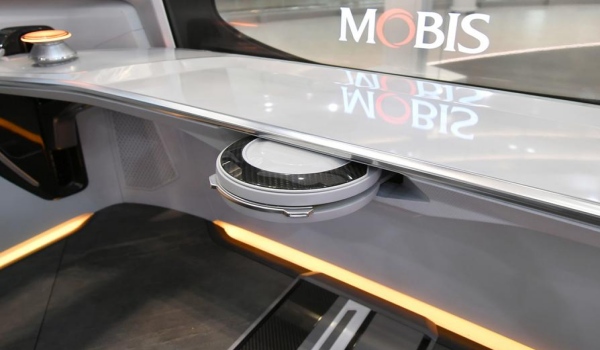A steering wheel for fake autonomous cars
Cool it’s cool. Driverless, not really.
Hyundai Mobis has designed a foldable steering wheel for use in future “autonomous” vehicles.

The wheel can move forward and back a total of 25cm, fully retracting into the dashboard when not in use, in order to free up more space in front of the driver’s seat.
When does this make sense?
That steering wheel is a cool piece of technology. It even minimizes the vibrations for the driver.
But obviously, a steering wheel like is useless, if not dangerous, as a safety measure.
Imagine the situation: you paid exactly to have a car that lets you stretch your legs, put your knees in the space left free by the folded steering wheel:

and relax, that is distract yourself as you please, because it is the car that does the driving
In such a situation, if an emergency came (e.g. the autonomous drive did not recognize an obstacle, or it just decided it cannot control the situation, so you must do it), that steering wheel would be useless, if not harmful. If it sprang back in a flash, like airbags, to its “open position:

it would hurt the “driver”. If it did it slowly enough to not do it, it would be too slow. In both cases, it would not avoid a crash.
Extracting it yourself? You could not do it back fast enough to avoid collisions. Assuming that you were awake of course. Because, what’s the point of not driving, if you must remain always completely focused on what is on the road?
In other words, that steering wheel is great. But if it is sold for “autonomous” cars, then it should be very clear that it is just for one use case of such cars.
Taking turns at the wheel
That use case is a combination of two mutually excluding scenarios, and of switching from one to the other only under certain conditions: when the car is not moving at all, or moving very slowly, with nothing in its immediate surroundings.
The first scenario consists of paths reserved to autonomous vehicles, physically separated by pedestrians, bikers and normal cars. Everywhere, that is, where drivers can be sure that they will never have to suddenly take control; places where, if an accident happened anyway, no court or insurance company would ever charge them (or their carmaker, of course).
The other scenario is normally “open” spaces, that is, in general any road or other driveable area not explicitly reserved for autonomous cars. That’s places where autonomous cars should always just stop at the borders, extract that foldable steering wheel, and tell their drivers “There! YOU, and you only drive as long as we stay here!”
That’s not exactly what marketing wants you to understand when talking about “autonomous” cars, of course.
Who writes this, why, and how to help
I am Marco Fioretti, tech writer and aspiring polymath doing human-digital research and popularization.
I do it because YOUR civil rights and the quality of YOUR life depend every year more on how software is used AROUND you.
To this end, I have already shared more than a million words on this blog, without any paywall or user tracking, and am sharing the next million through a newsletter, also without any paywall.
The more direct support I get, the more I can continue to inform for free parents, teachers, decision makers, and everybody else who should know more stuff like this. You can support me with paid subscriptions to my newsletter, donations via PayPal (mfioretti@nexaima.net) or LiberaPay, or in any of the other ways listed here.THANKS for your support!